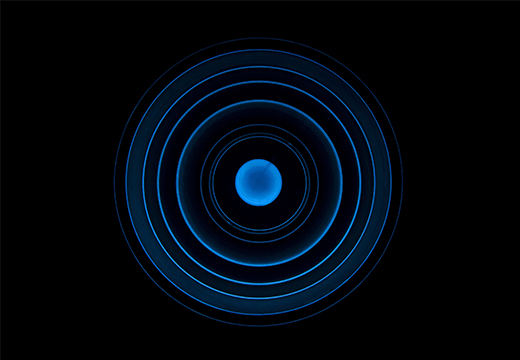иЎЁиҫҫејҸе’Ң MEL иҜӯжі•д№Ӣй—ҙеҸӘжңүдёӨдёӘеҢәеҲ«пјҡзӣҙжҺҘи®ҝй—®еҜ№иұЎеұһжҖ§пјҢд»ҘеҸҠж—¶й—ҙе’Ңеё§еҸҳйҮҸзҡ„дҪҝз”ЁгҖӮ
зӣҙжҺҘи®ҝй—®еҜ№иұЎеұһжҖ§
еңЁиЎЁиҫҫејҸдёӯпјҢеҸҜд»ҘзӣҙжҺҘи®ҝй—®еҜ№иұЎеұһжҖ§пјҢиҖҢеңЁ MEL дёӯеҲҷеҝ…йЎ»дҪҝз”Ё getAttrгҖҒsetAttrгҖҒgetParticleAttr жҲ– setParticleAttr е‘Ҫд»ӨгҖӮ
д»ҘдёӢжҳҜдёҖдәӣзӣҙжҺҘи®ҝй—®еҜ№иұЎеұһжҖ§зҡ„иЎЁиҫҫејҸиҜӯжі•зӨәдҫӢгҖӮ
persp.translateX = 23.2; float $perspRotX = persp.rotateX;
иҰҒеңЁ MEL дёӯжү§иЎҢзұ»дјјд»ҘдёҠзҡ„ж“ҚдҪңпјҢеҝ…йЎ»дҪҝз”Ё setAttr е’Ң getAttr е‘Ҫд»ӨпјҢеҰӮд»ҘдёӢзӨәдҫӢжүҖзӨәгҖӮ
setAttr("persp.translateY", 23.2); float $perspRotY = getAttr("persp.rotateY");
еңЁвҖңи„ҡжң¬зј–иҫ‘еҷЁвҖқ(Script Editor)дёӯжү§иЎҢд»ҘдёӢе‘Ҫд»ӨпјҢд»ҘеҲӣе»әдёҖз»„зІ’еӯҗпјҡ
particle -position 1 2 3 -position 2 1 3 -name dust;
зҺ°еңЁпјҢеҸҜе°Ҷд»ҘдёӢиЎЁиҫҫејҸиҜӯжі•з”ЁдәҺзІ’еӯҗеҪўзҠ¶пјҡ
vector $pos = position; acceleration = <<2, 1, 0>>;
иҰҒеңЁ MEL дёӯжү§иЎҢзұ»дјјд»ҘдёҠзҡ„ж“ҚдҪңпјҢеҝ…йЎ»дҪҝз”Ё setParticleAttr е’Ң getParticleAttr е‘Ҫд»ӨпјҢеҰӮд»ҘдёӢзӨәдҫӢжүҖзӨәгҖӮ
select dustShape.pt[0]; float $temp[] = getParticleAttr("-attribute", "position", "dustShape.pt[0]"); vector $position = <<$temp[0], $temp[1], $temp[2]>>; setParticleAttr("-attribute", "velocity", "-vectorValue", -3, 0, 0, "dustShape.pt[0]");
дёҠиҝ° MEL е‘Ҫд»Өд»…з”ЁдәҺ particleShape дёӯзҡ„第дёҖдёӘзІ’еӯҗгҖӮ
ж—¶й—ҙе’Ңеё§еҸҳйҮҸ
еңЁиЎЁиҫҫејҸдёӯпјҢеҸҜд»ҘдҪҝз”Ёйў„е®ҡд№үзҡ„ж—¶й—ҙе’Ңеё§еҸҳйҮҸгҖӮдҫӢеҰӮпјҡ
persp.translateY = frame; persp.rotateY = time;
дёҚиғҪеңЁ MEL дёӯдҪҝз”Ёж—¶й—ҙе’Ңеё§гҖӮиҰҒеңЁ MEL дёӯи®ҝй—®ж—¶й—ҙе’Ңеё§дҝЎжҒҜпјҢеҝ…йЎ»жү§иЎҢзұ»дјјеҰӮдёӢзҡ„ж“ҚдҪңпјҡ
float $frame = `currentTime -q`; string $timeFormat = `currentUnit -query -time`; currentUnit -time sec; float $time = `currentTime -q`; currentUnit -time $timeFormat;
жіЁйҮҠ
дёҚиғҪеңЁиЎЁиҫҫејҸдёӯдҪҝз”ЁеӨҡиЎҢ /* */ жіЁйҮҠгҖӮеҸҜд»ҘдҪҝз”Ё // жіЁйҮҠгҖӮ
,


